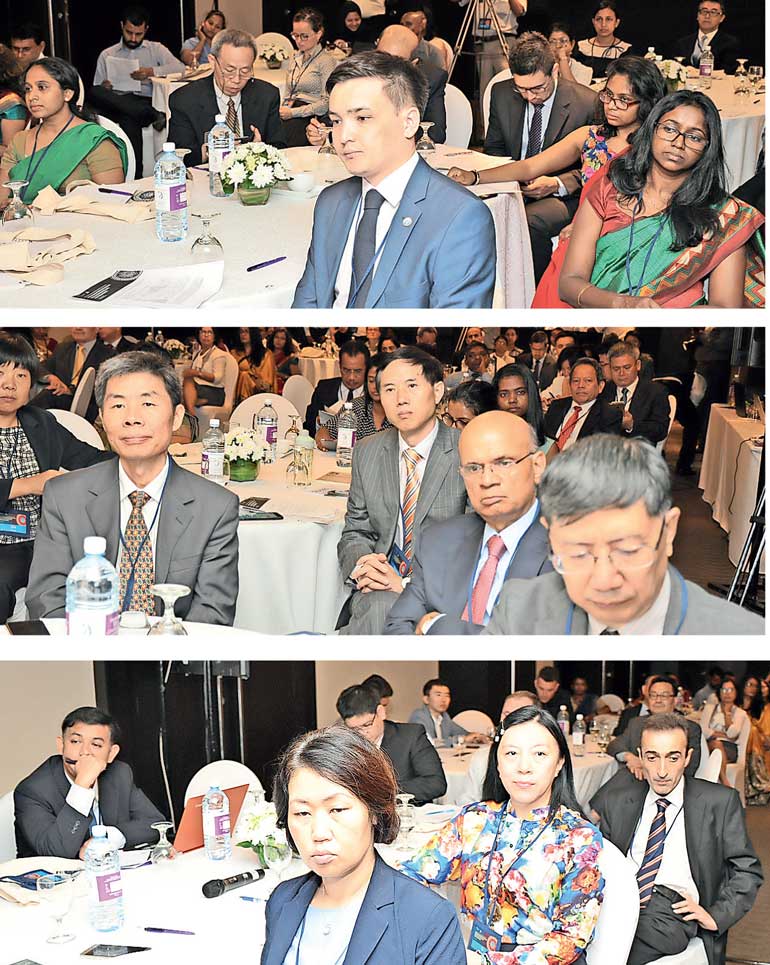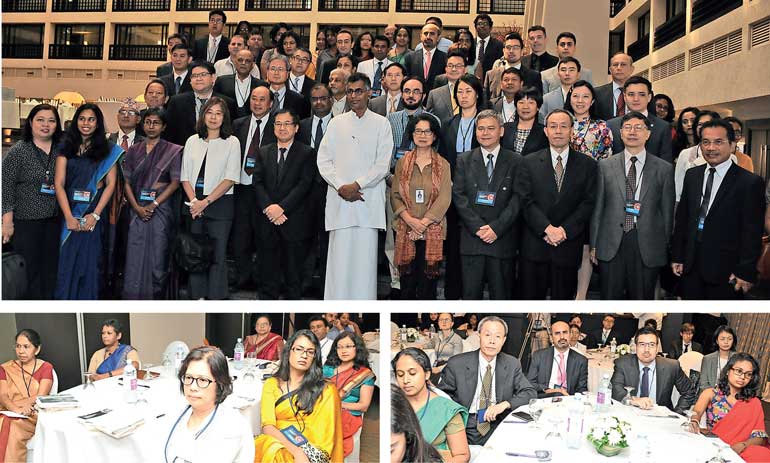Wednesday Dec 03, 2025
Wednesday Dec 03, 2025
Thursday, 21 September 2017 00:00 - - {{hitsCtrl.values.hits}}



By Charumini de Silva
Experts yesterday said urbanisation and cities are expected to play a crucial role as vital engines of economic growth while insisting that financing mega development projects was a key challenge faced by most developing economies in the Asia Pacific region.
Addressing the annual Asian Development Bank (ADB) - Asian Think Tank Development Forum 2017 on the topic of ‘Financing for Sustainable Urbanization in Asia and the Pacific’ in Colombo, they pointed out that Asia was in a rapid process of growth with rising demand for affordable housing, efficient transformation and better infrastructure.
ADB Resident Mission in Sri Lanka Country Director Sri Widowati said making cities inclusive, safe, resilient and sustainable was one of the goals of the 2030 agenda of Sustainable Development Goals adopted by world leaders in 2015. She added that it was a common factor for most of its member countries including Sri Lanka, which is in a period of transition towards upper middle income status. Noting that many cities in the region were facing rapid changes exerting huge pressure on the environment’s basic surface and infrastructure, she asserted that the Sri Lankan Government too has launched the Western Region Megapolis Project to transform the western region into an urban megapolis by 2030.
“The megapolis is expected to serve as a hub that connects Sri Lanka to the world, while serving as a stimulation to integrate special development in the country,” Widowati said.
However, she stressed that this ambitious plan presents major challenges not only in planning, governance and economic accumulation but also with financing in a sustainable manner.
Widowati reiterated that as it had done over a 50-year partnership, ADB will continue to support the Government in this journey, while noting that it has considered these in its latest Country Partnership Strategy 2018-2022, where it has earmarked $ 5 billion. It was pointed out that ADB has undertaken a study to develop a comprehensive plan for the Colombo-Trincomalee Economic Corridor which will integrate industry, infrastructure, logistics and urbanisation. “This will facilitate planned urbanisations beyond the Western Province. The strategy will support growth by boosting urban accumulations to improve the quality of investment and improve urban governance.”
She also noted that ADB has an ongoing Capital Market Development program in the country which will also provide the private sector with better access to finance.
“Right now we are speaking with the Government about the possibility to issue offshore local currency bonds, which is not yet finalised,” she added.
Widowati said the Asian think tank plays an increasingly important role in public policy and implementation in its member countries.
Highlighting the main urbanisation issues related to South Asian countries, Megapolis and Western Development Patali Champika Ranawaka said they were mainly unplanned, unsustainable, unhygienic, uncontrolled and unsafe, while adding that physical congestion and income disparity among city dwellers were also key factors to be considered in financing urban projects. He also said that some of these issues were relevant to some extent in South East Asia and the Pacific.
The Minister pointed out that population growth, an unending human desire for consumption, human greed and internal and external conflicts will result in a chaotic future world order, the adverse effects of which we have already begun to experience.
In this background, it was estimated by experts that approximately 53% of the population in Asia will be urbanised by 2025, hence countries like Sri Lanka will have many challenges and opportunities associated with this mass urbanisation.
Pros and cons of urbanisation
Outlining the positive consequences of urbanisation, he said an increase in the productivity of economies, encouraging the accumulation of resources which allows industries to produce goods and services at higher levels of productivity, leading to higher revenues, can be considered to be the positive aspect of urbanisation.
Slums and shanties caused due to rural urban migration of low-skilled workers without adequate employment opportunities, causing environmental problems, contributes to negative consequences such as high population density, rising emissions, floods and pollution.
Sri Lanka’s urbanisation holds some unique characteristics mainly because it is an island, he said, as around 6% of the total landmass in the country hosts 25% of the population.
Acknowledging that Sri Lanka has embarked on the Western Region Megapolis project, he said the Government was of the view that a megapolis was a driver of economic growth for any country. “In general, the economy of a megapolis region will have a higher gross domestic product (GDP) than a country’s average GDP.”
Long payback periods due to low returns, the different priorities of the Government such as the allocation of limited resources for education, health, food and security were listed as some of the obstacles to planned development. Therefore the Minister insisted that it was imperative for the Government to integrate the private sector to ensure sustainable financing of projects via public-private partnerships (PPPs). “To achieve the desired objectives we need to balance the public and PPPs in a more meaningful manner.”
IPS Acting Executive Director Dushni Weerakoon said Asia has a great opportunity to undertake an economic transformation through good urban planning to address issues of congestion and pollution as well as tackle income disparity within and around cities.
“Today good planning for urban development means creating sustainable cities that are environmentally friendly and consume fewer resources than in the past. It is estimated that out of the top 10 cities in the world, seven will be located in Asia,” she stated.
Noting that many of these projects fall under the Government’s flagship infrastructure megapolis, Weerakoon stressed that it all comes at a financial cost as the Megapolis is estimated to cost $ 40 billion over the next 15 years.
“Financing is the main challenge for most developing countries like Sri Lanka. We face limited fiscal space for the Government to finance major investments and infrastructure,” she added.
However, she pointed out that different countries will have to look at different financing mechanism on how to make smarter use of available resources and mobilise new resources. In terms of sustainable financing for infrastructure urbanisation, Weerakoon stressed that the private sector definitely has a role to play in investing in energy efficiency, ensuring transport systems were less polluting and in areas like waste management.
She also suggested the Government could also step in and raise access to the capital markets of local bodies by providing subsidies for loan guarantees. In addition, local authorities can also capture some of the increases in the value of land that are generated via infrastructure projects.
– Pix by Lasantha Kumara